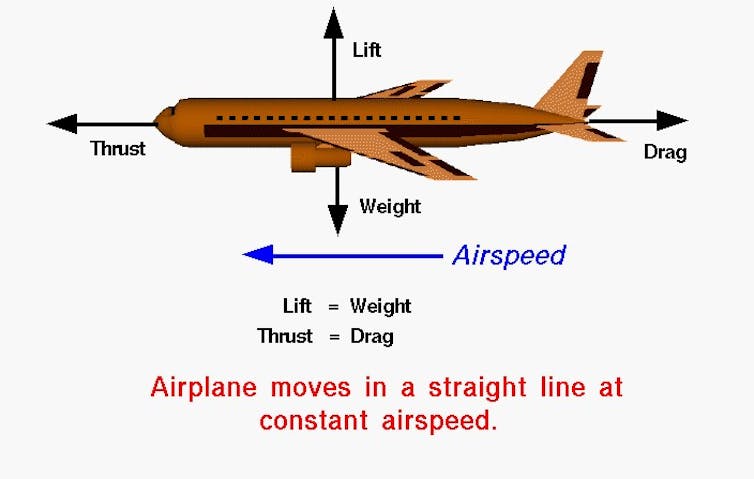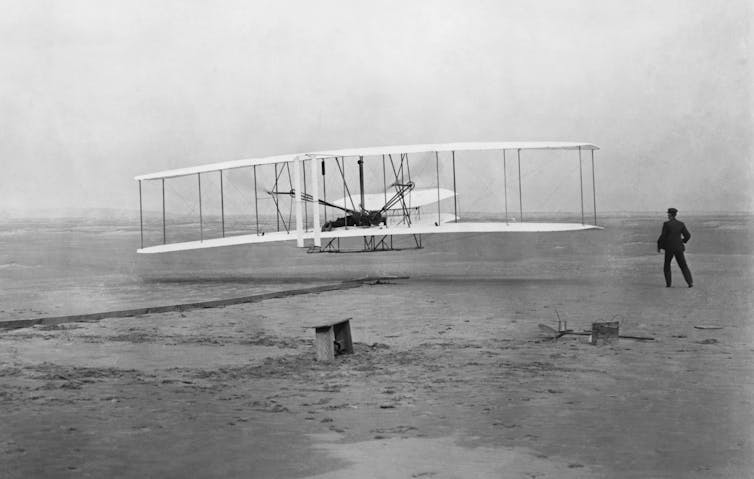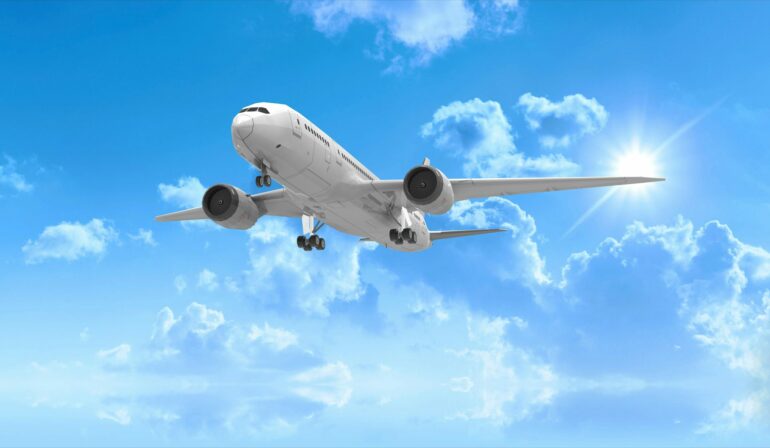
Curious Kids is a series for children of all ages. If you have a question you’d like an expert to answer, send it to [email protected].
How do airplanes fly? – Benson, age 10, Rockford, Michigan
Airplane flight is one of the most significant technological achievements of the 20th century. The invention of the airplane allows people to travel from one side of the planet to the other in less than a day, compared with weeks of travel by boat and train.
Understanding precisely why airplanes fly is an ongoing challenge for aerospace engineers, like me, who study and design airplanes, rockets, satellites, helicopters and space capsules.
Our job is to make sure that flying through the air or in space is safe and reliable, by using tools and ideas from science and mathematics, like computer simulations and experiments.
Because of that work, flying in an airplane is the safest way to travel – safer than cars, buses, trains or boats. But although aerospace engineers design aircraft that are stunningly sophisticated, you might be surprised to learn there are still some details about the physics of flight that we don’t fully understand.

The forces of weight, thrust, drag and lift act on a plane to keep it aloft and moving.
NASA
May the force(s) be with you
There are four forces that aerospace engineers consider when designing an airplane: weight, thrust, drag and lift. Engineers use these forces to help design the shape of the airplane, the size of the wings, and figure out how many passengers the airplane can carry.
For example, when an airplane takes off, the thrust must be greater than the drag, and the lift must be greater than the weight. If you watch an airplane take off, you’ll see the wings change shape using flaps from the back of the wings. The flaps help make more lift, but they also make more drag, so a powerful engine is necessary to create more thrust.
When the airplane is high enough and is cruising to your destination, lift needs to balance the weight, and the thrust needs to balance the drag. So the pilot pulls the flaps in and can set the engine to produce less power.
That said, let’s define what force means. According to Newton’s Second Law, a force is a mass multiplied by an acceleration, or F = ma.

On Dec. 17, 1903, the Wright brothers made their first flight at Kitty Hawk, N.C. Orville Wright is at the controls, while Wilbur looks on.
Bettmann via Getty Images
A force that everyone encounters every day is the force of gravity, which keeps us on the ground. When you get weighed at the doctor’s office, they’re actually measuring the amount of force that your body applies to the scale. When your weight is given in pounds, that is a measure of force.
While an airplane is flying, gravity is pulling the airplane down. That force is the weight of the airplane….



